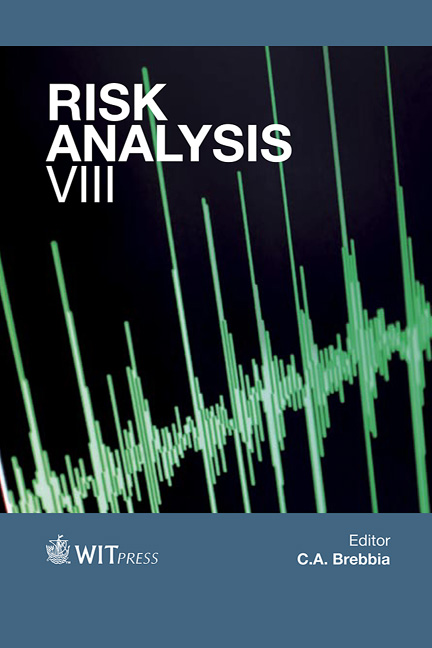CONFINE: An Airtightness Level Calculation Tool For People’s Protection In Case Of Accidental Toxic Releases
Price
Free (open access)
Volume
44
Pages
11
Page Range
329 - 339
Published
2012
Size
430 kb
Paper DOI
10.2495/RISK120281
Copyright
WIT Press
Author(s)
G. Guyot & F. R. Carrié
Abstract
Following the AZF chemical accident (Toulouse, 2001, 30 dead), a French law was adopted in 2003 that can compel public and private building owners to implement construction work on their buildings to protect occupants against specific accidents. To face the risk of a toxic gas cloud, they may be obliged to adopt a shelter-in-place strategy which mainly consists of identifying a shelter in the building and remaining in this room until the toxic cloud has finally been swept off. In addition to seeking refuge in an airtight room, this strategy called \“passive shelter-in-place” also includes closing all external openings and turning off all mechanical ventilation systems and air vents. In order to prove that shelter’s air-tightness is sufficient and that the occupants will not be exposed to irreversible effects, simulations are required using for instance the modeling tool named CONFINE. Originally developed by CETE de Lyon, this software is a pressure code able to model the infiltration of a pollutant inside a 3-zone building (shelter, attic and rest of building). This paper aims at giving an overview of CONFINE (governing equations, modelling hypotheses,) and will illustrate its application with examples of shelter-in-place strategy for residential and public buildings. Keywords: air infiltration, envelope, leakage, airtightness, shelter-in-place, ventilation, airflow calculation, vulnerability, toxic risk, land-use.
Keywords
Keywords: air infiltration, envelope, leakage, airtightness, shelter-in-place, ventilation, airflow calculation, vulnerability, toxic risk, land-use





